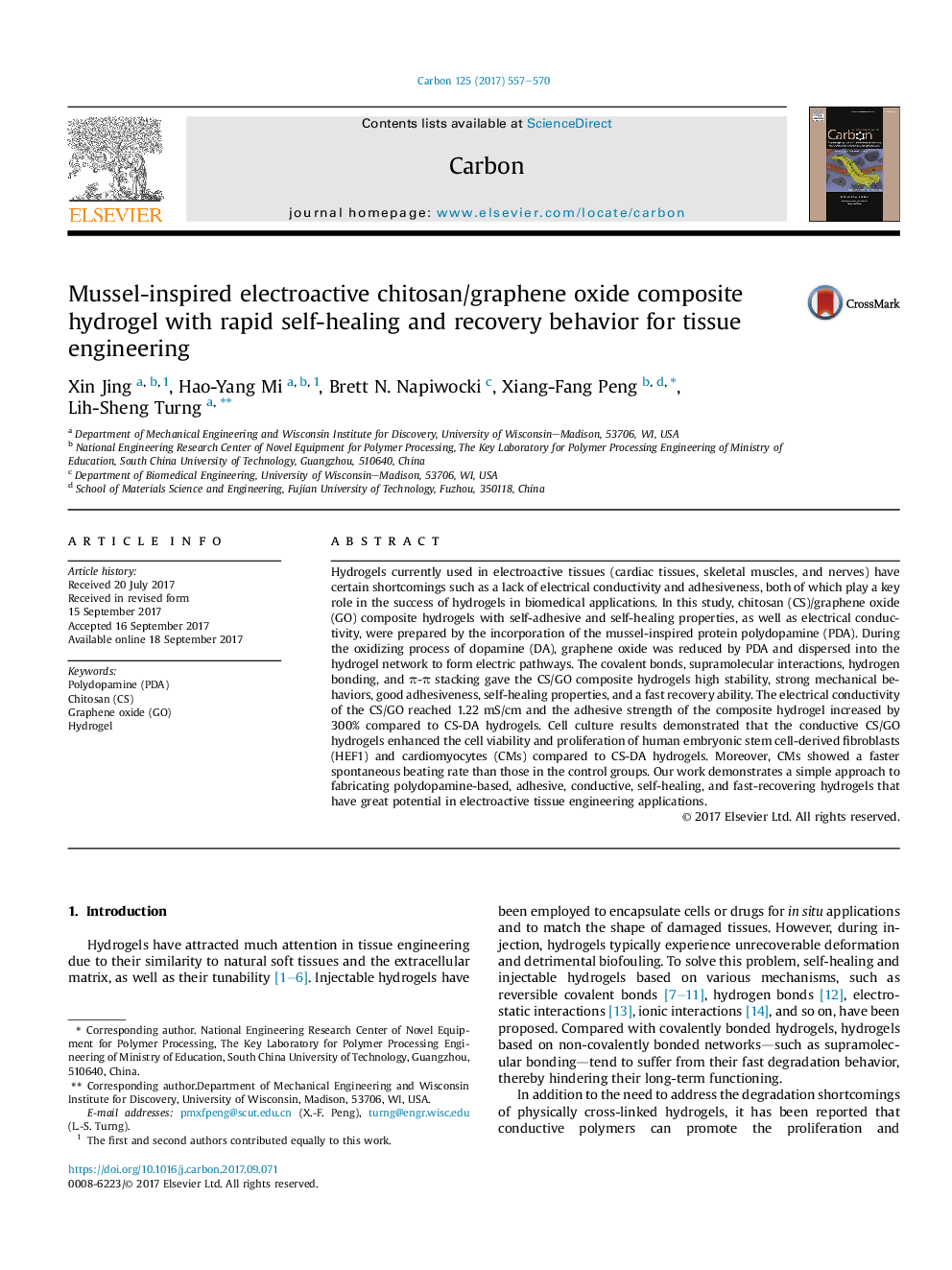| Article ID | Journal | Published Year | Pages | File Type |
|---|---|---|---|---|
| 5431719 | Carbon | 2017 | 14 Pages |
Hydrogels currently used in electroactive tissues (cardiac tissues, skeletal muscles, and nerves) have certain shortcomings such as a lack of electrical conductivity and adhesiveness, both of which play a key role in the success of hydrogels in biomedical applications. In this study, chitosan (CS)/graphene oxide (GO) composite hydrogels with self-adhesive and self-healing properties, as well as electrical conductivity, were prepared by the incorporation of the mussel-inspired protein polydopamine (PDA). During the oxidizing process of dopamine (DA), graphene oxide was reduced by PDA and dispersed into the hydrogel network to form electric pathways. The covalent bonds, supramolecular interactions, hydrogen bonding, and Ï-Ï stacking gave the CS/GO composite hydrogels high stability, strong mechanical behaviors, good adhesiveness, self-healing properties, and a fast recovery ability. The electrical conductivity of the CS/GO reached 1.22Â mS/cm and the adhesive strength of the composite hydrogel increased by 300% compared to CS-DA hydrogels. Cell culture results demonstrated that the conductive CS/GO hydrogels enhanced the cell viability and proliferation of human embryonic stem cell-derived fibroblasts (HEF1) and cardiomyocytes (CMs) compared to CS-DA hydrogels. Moreover, CMs showed a faster spontaneous beating rate than those in the control groups. Our work demonstrates a simple approach to fabricating polydopamine-based, adhesive, conductive, self-healing, and fast-recovering hydrogels that have great potential in electroactive tissue engineering applications.
Graphical abstractDownload high-res image (394KB)Download full-size image
